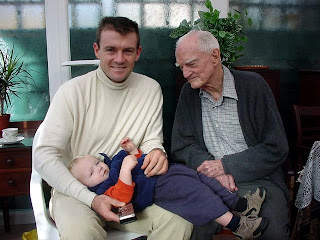
My father, Mervyn Smithyman, would have turned 98 yesterday. He died in August last year after he fell and broke his leg and had to have an operation. Dad had been in fine mind, if frail of body. He was still walking with a little help and only went into frail care the preceding October.
At the age of 91 he had emigrated from Africa to live in Chester, UK, but he remained an African in my mind.
There was something special about the breadth of his vision, his ability to see beyond the minor inconveniences, beyond petty quarrels to common interests that we all shared. When I complained about some small nuisance, he would say, ‘but that is not a train smash’. Even when my mother and he, (and the dog and I) left Zanzibar Island during the revolution with nothing, not even passports, he recognised that we were the lucky ones. Things did not matter, people did.
I mourn his passing this last year, I miss him but am glad for what we had: a father that stayed the long journey with us, intelligent, fun and loving.
The first photo is of Dad at the age of 93 in Chester, UK.
There was something special about the breadth of his vision, his ability to see beyond the minor inconveniences, beyond petty quarrels to common interests that we all shared. When I complained about some small nuisance, he would say, ‘but that is not a train smash’. Even when my mother and he, (and the dog and I) left Zanzibar Island during the revolution with nothing, not even passports, he recognised that we were the lucky ones. Things did not matter, people did.
I mourn his passing this last year, I miss him but am glad for what we had: a father that stayed the long journey with us, intelligent, fun and loving.
The first photo is of Dad at the age of 93 in Chester, UK.
Three generations in 2002: Here are Frost, (Dad's first great grandchild), David Adams, Dad's grandson (and my son) & Dad.
The last photo shows him on Independence Day (Uhuru) for Zanzibar Protectorate in December 1963 when Dad was 52. The revolution was a month later.
The last photo shows him on Independence Day (Uhuru) for Zanzibar Protectorate in December 1963 when Dad was 52. The revolution was a month later.




